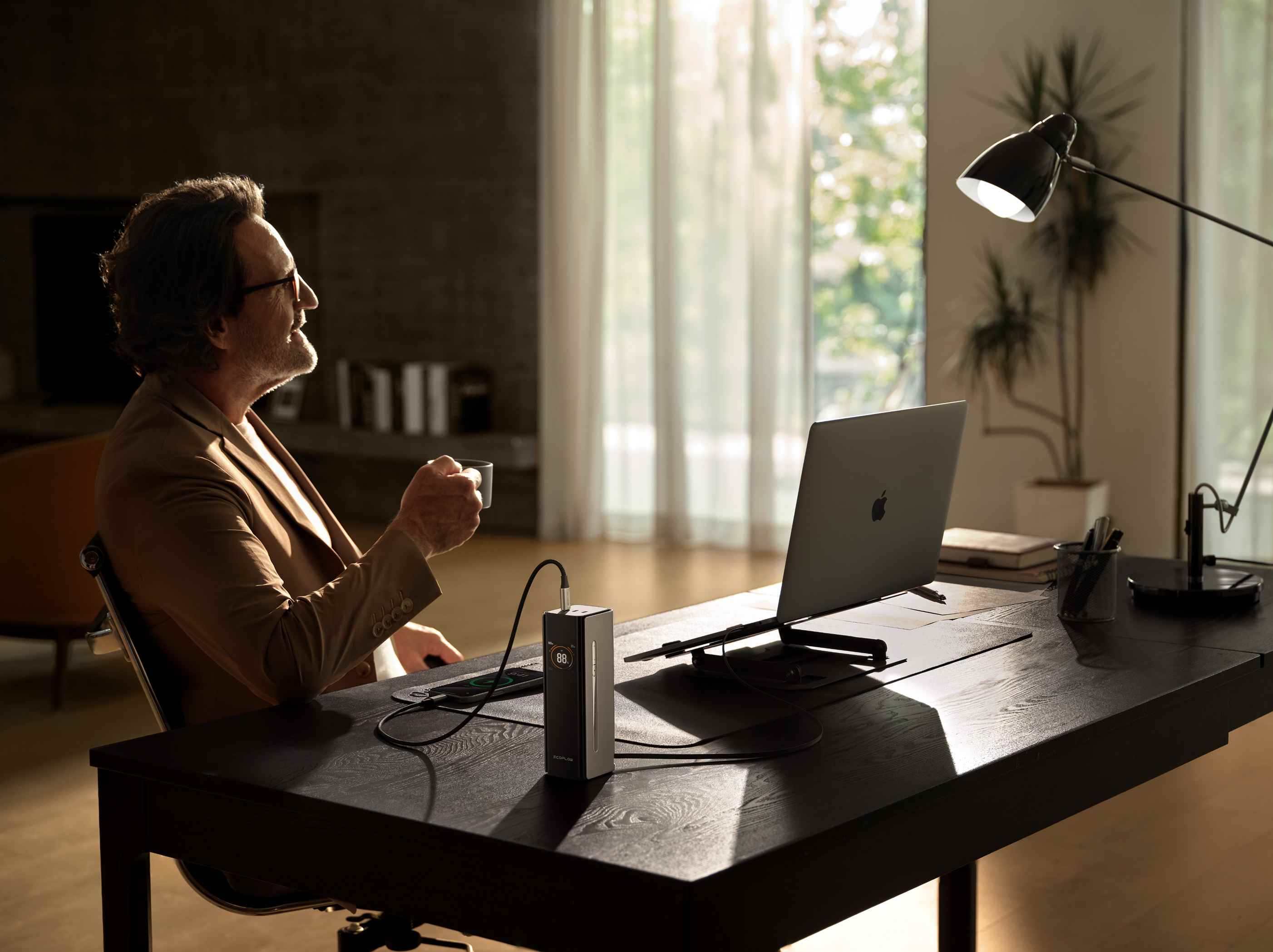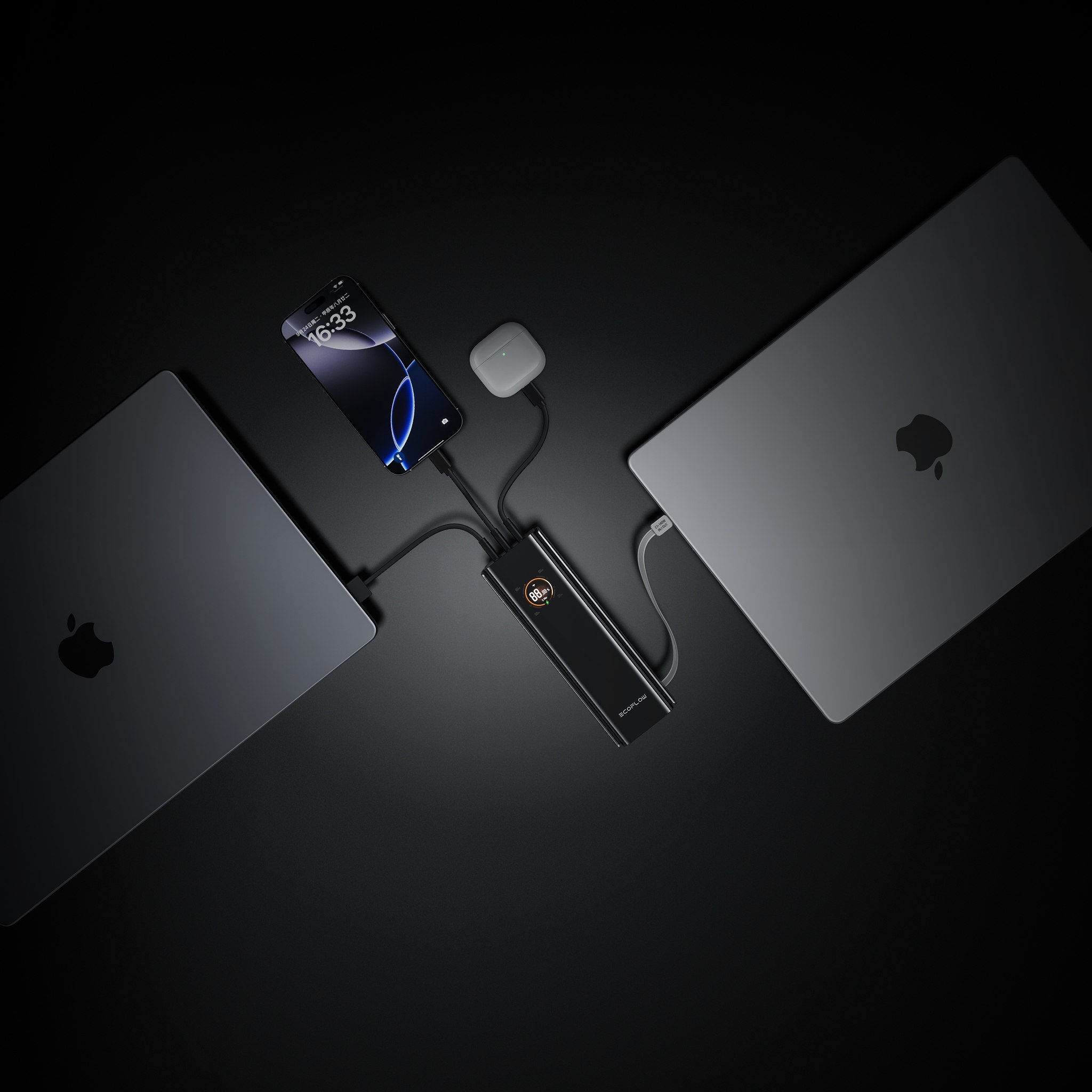- Why Your Phone Charger and Case Aren't Cooperating
- What Kinds of Cases Can Block the Charge?
- How to Choose a Case for Wireless Charging
- What a Bad Charger Can Bring You (The Dangers of Misalignment)
- How to Choose a Charger That Works Reliably with a Case
- Finding a Charger That Ends the Frustration for Good
- The Final Verdict
- FAQs About Wireless Charging with Cases
Can Wireless Charging Work with a Case?
- Why Your Phone Charger and Case Aren't Cooperating
- What Kinds of Cases Can Block the Charge?
- How to Choose a Case for Wireless Charging
- What a Bad Charger Can Bring You (The Dangers of Misalignment)
- How to Choose a Charger That Works Reliably with a Case
- Finding a Charger That Ends the Frustration for Good
- The Final Verdict
- FAQs About Wireless Charging with Cases
It's an all too familiar scenario. You plug your phone into that wireless charging station, watch the charging indicator come on, and then head to bed. But come morning, you discover your phone hasn't charged much—or worse, it has charged fully but is toasty-warm to the touch. You are left to wonder if there is something wrong with your charging station or if it has something to do with your case.
The quick answer is that yes, wireless charging is absolutely possible with a case.
"Yes," however, is not so straightforward. Indeed, there are exceptions that are critical to your charging process. Getting an efficient "fast and cool" charge or "hot and slow" charge depends on factors that include your device case and charging cord. In this tutorial, you'll understand whether your charging process has been going wrong and how to get an excellent charge every time.
Why Your Phone Charger and Case Aren't Cooperating
You may recognize these common symptoms:
The "Hot Phone" Problem: You pick up your phone from the charger and it’s very hot to the touch.
The "Slow-Motion" Charge: The phone is charging, but it’s incredibly slow, gaining only a few percentage points per hour.
The "On-and-Off" Charge: The phone repeatedly connects and disconnects from the charger.
These issues—the heat, the slow speed, and the inconsistent connection—are all symptoms of one single root issue: inefficient power transfer. This inefficiency is typically caused by two things: 1. Physical obstruction from the case, or 2. Poor alignment between the charger and the phone.
What Kinds of Cases Can Block the Charge?
Before you blame the charger, let's investigate your case. The failure often comes down to three things: thickness, materials, or accessories.
Excessive Thickness
Wireless charging (electromagnetic induction) works over a very short range, usually just a few millimeters.
The Standard: Most wireless chargers can power through a case that is up to 3mm to 5mm thick.
The Problem: If you’re using an ultra-rugged, heavy-duty, or multi-layer "tough" case, it is likely thicker than 5mm. This creates too much physical distance for the charger's magnetic field to efficiently reach your phone's coil.
Obstructive Materials
This is the most common and definitive charging failure: metal.
Safe Materials: Cases made from plastic, silicone, TPU (a flexible rubber-like plastic), and even thin leather are generally fine for wireless charging. They are "non-metallic" and do not interfere with the electromagnetic field.
Blocking Materials: Any case made of aluminum, steel, or with metal plates will reflect and absorb the electromagnetic field, completely blocking the energy transfer. This is the same reason smartphone manufacturers switched from metal backs to glass or plastic when wireless charging was introduced.


Attached Accessories
This is a "hidden" blocker. You might have a thin, plastic case that should work, but an accessory is getting in the way.
The main items that cause problems are:
Phone Grips and Rings: These add too much thickness (well over 5mm) and are often made of metal or dense plastic, creating a gap that blocks the charge.
Wallet Cases: If you have credit cards in the back of your case, the combined thickness can stop the charge. More importantly, the magnets in a wireless charger can permanently damage the magnetic strips on your cards.
Metal Kickstands: Just like a metal case, a metal kickstand will block the charge.
How to Choose a Case for Wireless Charging
Based on the issues above, follow these simple rules when selecting a case:
Check the Thickness: Choose a case that is specified to be under 5mm thick. Many manufacturers will label their products as "wireless charging compatible."
Check the Materials: Avoid any case that contains metal (metal plates, metal frames, etc.).
Check for Accessories: If you use grips, rings, or wallets, choose a "MagSafe-compatible" system. These accessories are magnetic and are designed to be easily removed before you place your phone on the charger.
What a Bad Charger Can Bring You (The Dangers of Misalignment)
So, what if you have a thin, plastic case with no accessories, and your phone still gets hot and charges slowly?
You have discovered the other major problem with wireless charging: misalignment.
As covered, wireless charging requires a transmitter coil (in the charger) and a receiver coil (in your phone) to be lined up almost perfectly. With a standard, non-magnetic charging pad, it is very easy to place your phone slightly off-center.
When the coils are misaligned, the energy transfer becomes highly inefficient. The charger is pushing out power, but your phone’s coil is only "catching" a fraction of it. The rest of that energy doesn't just disappear—it's "spilled" and converted into waste heat.
This creates a chain reaction of failure that explains your frustrations and the danger:
Misalignment leads to inefficient energy transfer, which creates excessive heat. In response, your phone's smart-charging system (designed to protect the battery) automatically slows down or stops the charge to prevent damage.
The result? A phone that is hot to the touch and barely charged. It's not wireless charging itself that is bad for your battery—it's the chronic overheating from this inefficient, misaligned charging that can degrade your battery’s health over time.


How to Choose a Charger That Works Reliably with a Case
The solution to the problems of misalignment and heat is to use a charger that forces perfect alignment and intelligently manages heat.
Solution 1: Magnetic Alignment (Qi2 and MagSafe)
The most effective solution for alignment is magnets.
MagSafe (by Apple) introduced a system of magnets built around the charging coil that "snaps" the phone onto the charger in the perfect spot, every time.
The new global standard, Qi2 (pronounced "chee-two"), incorporates this same "Magnetic Power Profile" (MPP) for all compatible devices.
This magnetic connection is the ultimate solution to misalignment. It guarantees a perfect connection, which means maximum efficiency, less wasted energy, less heat, and the fastest possible charging speeds.
Solution 2: Smart Temperature Control
The second half of the solution is a charger with internal safety controls. High-quality modern chargers are equipped with Smart Temperature Control systems.
These chargers use built-in NTC (Negative Temperature Coefficient) sensors to continuously monitor the temperature of the charger and your device.
If it detects that your phone is getting too warm, it will automatically and intelligently reduce the charging power to let it cool down before resuming full speed.
This is a critical safety feature. A cheap charger will keep pushing power and generate excessive heat, while a smart charger actively protects your battery health.
Finding a Charger That Ends the Frustration for Good
Instead of guessing at alignment, you need a charger that combines these new technologies. The EcoFlow 3-in-1 Wireless Charging Station is a clear example of this new generation of smart chargers.
You do not have to manually find the precise charging position. It is Qi2.2-certified, meaning its magnets align your phone to the correct spot for a full-speed, ultra-fast 25W charge.
You can charge with confidence. Its Smart Temperature Control system and advanced NTC sensors continuously monitor temperature to ensure it stays below 107.6℉ (42°C), protecting your phone's battery from heat damage.
It is convenient for the Apple ecosystem. This 3-in-1 station is also MFW-Certified (Made for Watch), so it safely fast-charges an Apple Watch without the overheating warnings from uncertified chargers. Plus, it has a dedicated spot for AirPods.
It can charge quietly at night. The charger has an Ambient-adaptive charging mode. When it senses the room is dark, it intelligently lowers the power to 7.5W for a silent, low-heat charge.
It is functional. The durable, fully adjustable stand (0-65°) is perfect for hands-free video calls, and the entire unit folds, making it suitable for travel.
EcoFlow RAPID Mag Wireless Charging Station (3-in-1 Foldable)
The Final Verdict
The real issue is often not your case, but an outdated, non-magnetic charger that cannot cope with the two biggest challenges: alignment and heat.
By choosing a modern, intelligent charger—especially one with magnetic alignment like Qi2 and smart temperature controls—you can finally enjoy the convenience of wireless charging and the protection of a case, without any of the compromises.
FAQs About Wireless Charging with Cases
Q1. Do I need a "MagSafe case" to use a MagSafe or Qi2 charger?
No, it's not required, but with modern iPhones (12 models onward), there are magnets within the phone itself called MagSafe magnets. This makes it possible to magnetically attach your Qi2 charger to the phone. But with a 'MagSafe compatible' case, there are also magnets within the case that increase the hold greatly.
Q2. Will wireless charging "overcharge" my battery if I leave it on all night?
This is actually a misconception. Modern smartphones come with intelligent charging technology that prevents them from charging beyond 100% capacity. The problem isn't overcharging—it's overheating. If you use an inefficient charger, it may generate excessive heat and stay hot all night long. This is the reason why you need to be so particular about selecting an intelligent charging device that has smart temperature management.
Q3. Doesn't wireless charging have negative impacts on the environment due to lower efficiency?
First of all, it's true that wireless charging isn't as energy efficient as charging with a cable. The difference was significant enough that companies are working to increase that efficiency with the development of standards such as Qi2, which requires perfect alignment. Additionally, wireless charging reduces e-waste from broken cables and eliminates wear on charging ports.
Q4. My brand new Qi2 charger is charging my device rather slowly. What's wrong with it?
Check your wall adapter. A 15W or 25W wireless charging kit requires a powerful wall adapter. Chances are that if you are charging with an outdated 5W wall adapter (like those sold with iPhones until recently) or with your laptop's USB port, your charging device just isn't receiving enough juice to function at optimal speeds. In that case, you'll require a PD wall adapter rated 30W or greater if you want 25W output.
Q5. Will the magnets within the Qi2 or MagSafe charging device damage either my phone or credit cards?
Your cell phone is designed to be safe. These charging devices feature shielding to protect your cell phone's internal components. But your credit cards are definitely not safe. These magnets are capable of demagnetizing the magnetic strip that is present in hotel keys and credit cards. This explains why you need to remove any 'wallet' attachments that are on your cell phone case before putting it on the magnetic charging device.